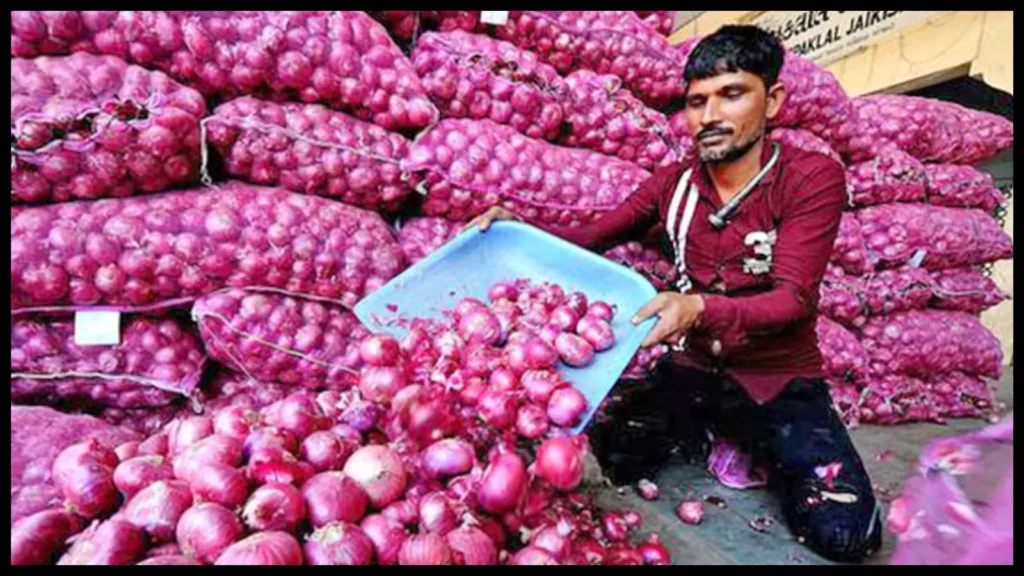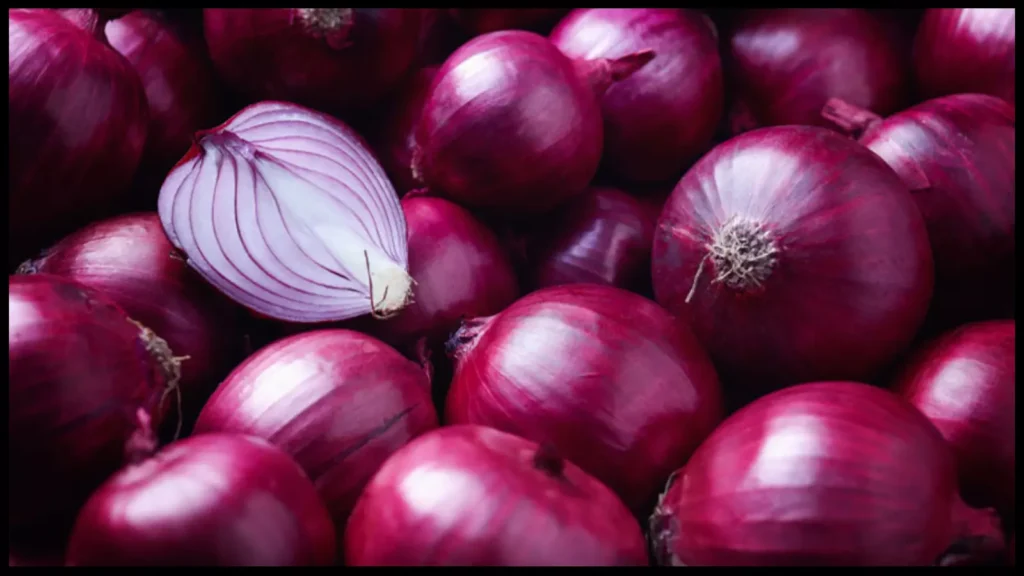Curb on Onion Exports: Government Takes Action to Stabilize Prices

On Saturday, the government took a significant step to address concerns about onion supplies and potential price hikes during the upcoming festive season by implementing a 40% export duty on onions. This export duty will remain in effect until December 31, 2023.
This marks the first time that the government has imposed such a duty, primarily due to a noticeable increase in onion exports this year. In previous instances, measures such as banning onion exports from September to December in 2020 and establishing a minimum export price in 2019 were taken.
This latest action was prompted by official data revealing a surge in retail inflation, measured by the consumer price index, reaching a 15-month high of 7.4% in July, up from the previous month’s 4.9%. In his Independence Day speech, Prime Minister Modi pledged to tackle inflation and alleviate the burden on citizens.
Government officials pointed out that this year, exports during the January-March period were exceptionally high, totaling approximately 8.2 lakh tonnes, compared to 3.8 lakh tonnes during the corresponding period in the previous year.

In order to bolster onion availability in the domestic market, especially in anticipation of the forthcoming festival season, the government decided to impose a 40% duty on onion exports, according to Union consumer affairs secretary Rohit Kumar Singh, who made the announcement on Saturday. He also noted a recent sharp rise in exports.
Officials have attributed this export surge to the January-March period this year, which saw exports totaling 8.2 lakh tonnes, a stark contrast to the 3.8 lakh tonnes exported during the same period in the previous year. Government data has shown that the average retail price of onions has risen to Rs 30 per kilogram, compared to Rs 25 just a month earlier.
This comes amidst reports of slow kharif sowing due to delayed monsoon arrivals in key onion-producing states like Maharashtra and Karnataka. Additionally, the high moisture content in stored rabi crops resulting from untimely April rains in Maharashtra and Karnataka has adversely affected the produce’s shelf life.
Sources have also cited slight reductions in estimated onion production, which stands at 31 million tons (MTs) compared to 31.7 MTs last year, along with quality concerns.
Meanwhile, at Lasalgaon in Maharashtra, Asia’s largest onion market, the benchmark price surged by 50% to Rs 2,050 per quintal on Saturday, up from Rs 1,370 per quintal on August 2nd.
Latest Post
- Uttarakhand Rainfall: Devastation Strikes Uttarakhand’s Tapkeshwar Temple and Surrounding Areas
- UPSC Success Story: The Inspiring Journey of IAS Rukmani Riar
- Unbelievable Deal: Own a House for Just $1! The World’s Cheapest Home is Waiting
- Curb on Onion Export: Government Takes Action to Stabilize Prices